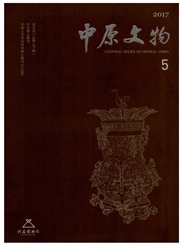

 中文摘要:
中文摘要:
利用电感耦合等离子体发射光谱和质谱方法测定了安徽蚌埠禹会遗址出土的薄胎磨光黑胎与普通陶器的微痕量元素化学组成,并对测试数据进行了主成分分析和稀土元素配分模式分析,结果显示,薄胎磨光黑陶的微痕量元素组成与普通陶器有明显不同,结合考古学背景分析,这种制作精关的高档陶器应不是由禹会遗址本地生产,而是从外地传入的,且其产地来源可能在2处以上。本文的研究对探明禹会遗址的性质、验证“禹会涂山”历史记载的真实性、了解龙山时代晚期皖北及其周边地区陶器传播与文化交流等问题具有重要的学术价值。
 英文摘要:
英文摘要:
The aim of this work is to investigate the provenances of these fine potteries. The micro- and trace element compositions of thin polished black pottery and cdntemporaneous common potteries unearthed from Yuhui Site were determined by ICP-AES and ICP-MS, and the test data was analyzed using Principal component analysis and REE patterns analysis methods. Analysis results show that the thin polished black pottery was 1not manufactured at Yuhui site but imported from other production spots which might be two or more. This finding provides important scientific basis for verifying the authenticity of historical record "Tushan Assembly" and exploring the nature of Yuhui contemporaneous sites. site as well as the culture exchanges among Yuhui and other nearby
 同期刊论文项目
同期刊论文项目
 同项目期刊论文
同项目期刊论文
 期刊信息
期刊信息
